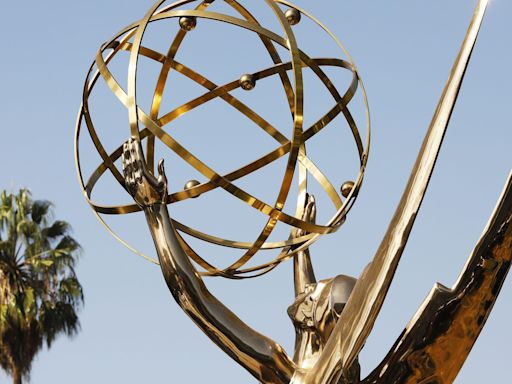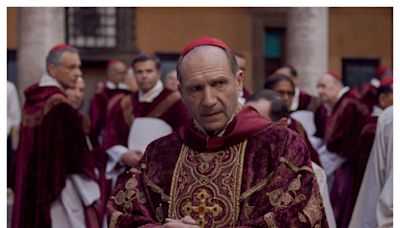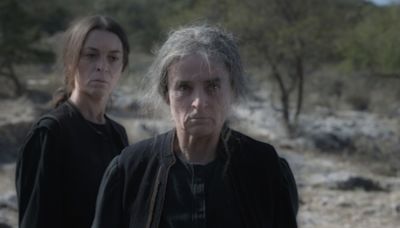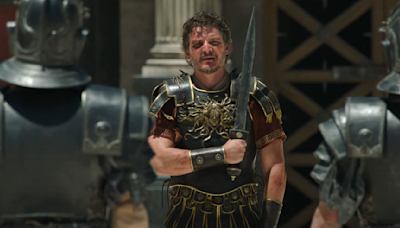Search results
Floyd Crosby won the award for Tabu in 1931, which was the last silent film to win in this category. Hal Mohr won the only write-in Academy Award ever, in 1935 for A Midsummer Night's Dream. Mohr was also the first person to win for both black-and-white and color cinematography.
Mar 28, 2021 · By the 1940s, two full Academy Awards were given out for cinematography each year, divided into black & white and color. This would continue until 1967 when color and black & white films would finally be judged against each other for a single Best Achievement in Cinematography award.
Apr 19, 2024 · The Oscar for Best Cinematography is an award presented annually by the Academy of Motion Picture Arts and Sciences to recognize exceptional achievements in the art and craft of cinematography.
- Overview
- 1920s and 1930s
- 1940s and 1950s
- 1960s and 1970s
- 1980s and 1990s
- 2000s and 2010s
- 2020s
award presented annually by the Academy of Motion Picture Arts and Sciences, located in Beverly Hills, California. It honors outstanding achievement by a cinematographer in a movie from a given year, as determined by the academy’s voting members.
At the inaugural Academy Awards ceremony, in 1929, the award recognized the work in films released from August 1, 1927, to August 1, 1928. The next 5 ceremonies honored work in films released from August to July. Beginning with the 7th ceremony (1935), only work in movies released the previous calendar year was eligible for consideration. In the 9th through 11th ceremonies (1936–38), a special award was given for color cinematography, and from the 12th to the 39th ceremonies (1939–66), except for the 30th ceremony (1957), separate Academy Awards were given for color and black-and-white cinematography. The winning cinematographers are given a gold-plated statuette known as an Oscar.
•1927–28: Charles Rosher and Karl Struss (Sunrise)
•1928–29: Clyde De Vinna (White Shadows in the South Seas)
•1929–30: Joseph T. Rucker and Willard Van Der Veer (With Byrd at the South Pole)
•1930–31: Floyd Crosby (Tabu)
•1931–32: Lee Garmes (Shanghai Express)
•1932–33: Charles Bryant Lang, Jr. (A Farewell to Arms)
•1940: Black-and-White: George Barnes (Rebecca); Color: Georges Périnal (The Thief of Bagdad)
•1941: Black-and-White: Arthur Miller (How Green Was My Valley); Color: Ernest Palmer and Ray Rennahan (Blood and Sand)
•1942: Black-and-White: Joseph Ruttenberg (Mrs. Miniver); Color: Leon Shamroy (The Black Swan)
•1943: Black-and-White: Arthur Miller (The Song of Bernadette); Color: Hal Mohr and W. Howard Greene (Phantom of the Opera)
•1944: Black-and-White: Joseph LaShelle (Laura); Color: Leon Shamroy (Wilson)
•1945: Black-and-White: Harry Stradling (The Picture of Dorian Gray); Color: Leon Shamroy (Leave Her to Heaven)
•1960: Black-and-White: Freddie Francis (Sons and Lovers); Color: Russell Metty (Spartacus)
•1961: Black-and-White: Eugen Shuftan (The Hustler); Color: Daniel L. Fapp (West Side Story)
•1962: Black-and-White: Jean Bourgoin and Walter Wottitz (The Longest Day); Color: Freddie Young (Lawrence of Arabia)
•1963: Black-and-White: James Wong Howe (Hud); Color: Leon Shamroy (Cleopatra)
•1964: Black-and-White: Walter Lassally (Zorba the Greek); Color: Harry Stradling (My Fair Lady)
•1965: Black-and-White: Ernest Laszlo (Ship of Fools); Color: Freddie Young (Doctor Zhivago)
•1980: Geoffrey Unsworth and Ghislain Cloquet (Tess)
•1981: Vittorio Storaro (Reds)
•1982: Billie Williams and Ronnie Taylor (Gandhi)
•1983: Sven Nykvist (Fanny & Alexander)
•1984: Chris Menges (The Killing Fields)
•1985: David Watkin (Out of Africa)
•2000: Peter Pau (Crouching Tiger, Hidden Dragon)
•2001: Andrew Lesnie (The Lord of the Rings: The Fellowship of the Ring)
•2002: Conrad L. Hall (Road to Perdition)
•2003: Russell Boyd (Master and Commander: The Far Side of the World)
•2004: Robert Richardson (The Aviator)
•2005: Dion Beebe (Memoirs of a Geisha)
- The Editors of Encyclopaedia Britannica
The cinematographers that won the Oscar are listed in the description. From 1939 to 1966, the category was split into two with one being for movies that were in Black-and-White and the other being for movies that were in Color. Here's a list of all the movies nominated for Best Cinematography: https://www.imdb.com/list/ls026321216
3 days ago · Take a look at the movies and filmmakers that have won the Academy Award for Best Cinematography over the past 25 years and big scenes and moments immediately fill the mind’s eye: Saving...
People also ask
When was the Academy Award for Best Cinematography awarded?
When did cinematography get nominated?
What is a Cinematographer Award?
Who has won the most Oscars for cinematography?
Nov 29, 2019 · The Academy Award for Best Cinematography has been awarded since the inaugural Academy Awards, held in 1929. It is one of only a few categories to have been awarded every year at the Oscars. The first winners were Charles Rosher and Karl Struss, who were awarded for the 1927 film Sunrise: A Song of Two Humans.






